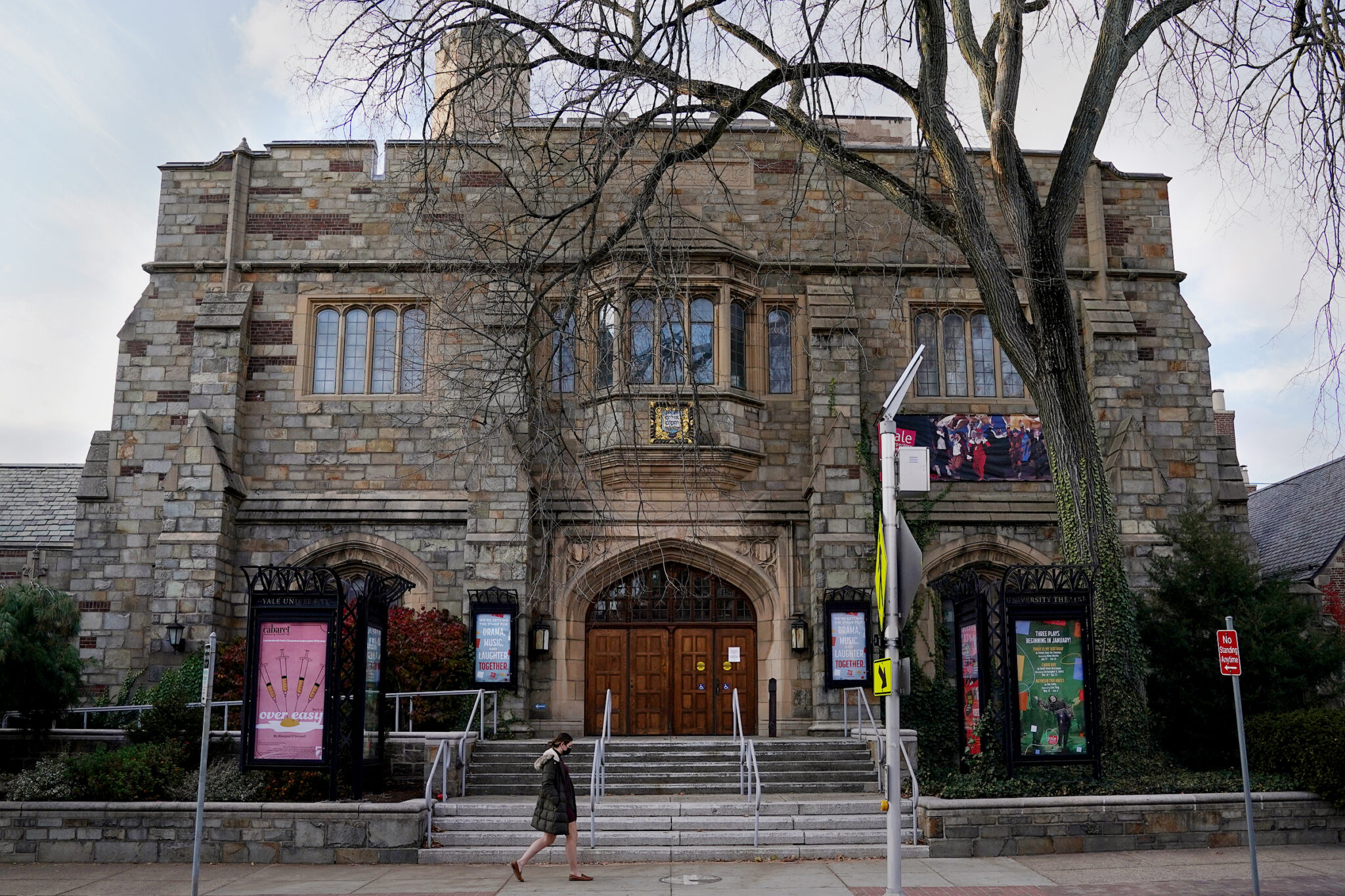‘Cleansed’: a story of violence, grief and hope
The senior thesis project “Cleansed” by Garrett Allen DRA ’24 premiered this past week.

Tim Tai, Senior Photographer
“Cleansed,” a play by British playwright Sarah Kane, premiered at the University Theater on Jan. 20.
“Cleansed” was Garrett Allen’s DRA ’24 thesis project, in which they were the director. The play tells the story of a woman named Grace, who is grieving the loss of her brother. In her grief, she decides to take his place at an institution for society’s “undesirables,” where the sadistic Tinker “cures” the patients. Through emotional monologues and shocking scenes, this play paints a tale of grief, love and hope.
“Part of the experience of this play is to ground us,” Allen said. “What are you feeling? And why are you feeling the things that you’re feeling about these people?” They called the play, “an act of radical activation and reflection.”
Allen proposed “Cleansed,” along with several other plays, for their senior thesis project. However, Allen said they were particularly drawn to this piece ever since they read it during their first year at Harvard.
Unlike other shows at the Yale School of Drama, actors could choose to opt into the production as it was not given to actors as a formal assignment. When Allen proposed the show to their classmates, they said they were grateful that other students “saw the vision” for what the show could be.
This was one of the first major productions of the British play in the United States — the only other being an upcoming performance of the show at the Midtown Arts and Theater Center in Houston, Texas — and Allen had a unique interpretation of the show.
Allen chose to produce their show with an all-Black cast — a first in the history of this play.
“Sarah Kane is centering this around people that are undesirable for society,” Allen said. “I think about the history of Black people in this country, the history of the institutionalization of Black people.”
Though the play was written by a white woman, Allen said they always imagined this play with a Black company. Adding this new layer to the show brought about a process of experimentation.
Whitney Andrews DRA ’24 — who played Grace — compared the rehearsal room to “a big experiment,” Andrews said.
“Everyone’s trying on the thing they learned in class, everyone’s taking out their new tools and they’re like, ‘All right, well, let’s see if this thing works’ … sometimes it doesn’t,” Andrews said.
An experimental approach to this show proved necessary considering the unique aspects of the production. According to Andrews and Allen, the story does leave some questions and aspects of the plot “unanswered”: What is the light that Carl and Grace walk into, how do the Tinker and the Woman know each other and what is the significance of the flowers that seem to bloom out of the theater floor? Actors and audience members alike must reconcile with that.
Like any experiment, there are always variables at play. In the rehearsal room, actors were in control of how they experimented. However, some variables are outside of the actors’ control. According to Allen, the variables of the experiment were always changing from the weather to the actors’ health, to the size and personality of the audience.
“It’s a new audience, new people living, new people breathing with you and new people dying with you,” said Allen. “We’re all in the theater always living, breathing and dying.”
For the actors themselves, the learning and experimenting was still happening, but now in front of an audience, Andrews said. Using the metaphor of an experiment, Andrews felt that the only “control variable” was herself.
The performance itself was a testament to the sensory, emotional and interpretive nature of theater and art.
The production was a shock to the senses with scenes of blinding lights, deafening gunfire, frequent nudity, graphic torture and uncomfortable and intimate sex scenes. The visual and auditory aspects of this show heightened the senses of the audience — forcing members to remain “on” at all times said Allen.
“I thought the design was really beautiful, the use of lighting especially,” said audience member and student Elliot Lee DRA ’26. “It was very emotionally effective.”
Lighting played a crucial role in the show, highlighting the extremity of the scenes. Stark-white lights filled up the Tinkers’s office, instilling a sense of unease, while moody purple and green lights set apart the Tinker and the sensual Woman he was infatuated with. Blinding, heavenly lights shone out toward the audience in the final scene as the only two surviving patients left the institution.
Color acted as a character of its own in this show as well in both the set and costume design. The constant theme of the color yellow was present throughout, from the yellow flowers that grew out of the stage to the yellow sundress Robin wore. Yellow seemed to express hope and joy amid a sorrowful and violent environment.
While the play explored the complete range of human emotions, from grief, love, grace and hope, some of these messages were left up to the audience’s interpretation. The audience needed to “meet [the actors] halfway,” said Allen.
While the nature of the play was graphic and violent, Allen emphasized that the show is not intended to be violent for violence’s sake.
“There are a lot of moments of beauty in this play,” said Allen. “Our bodies are so shocked or engaged or activated or provoked by the violence that we can miss that. My hope is that … you’re able to hold everything: the immensity of the beauty and the pain and everything in between at once.”
“Cleansed” played from Jan. 20 through 26.







